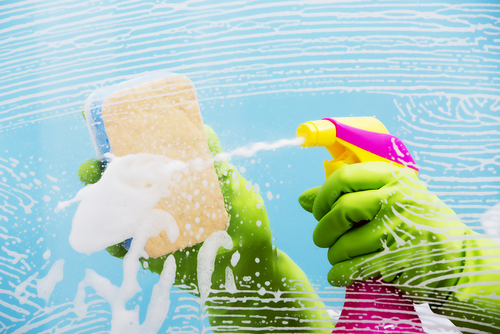A good spring cleaning can enhance safety in your workplace if it’s done with an eye to eliminating hazards.
 |
Spring cleaning is an annual ritual that coincides with warmer weather and the ability to open up homes that were tightly battened down against the winter’s chill. The idea of an annual cleaning binge is useful in the workplace, too, enabling you to catch up on things that could otherwise be pushed to the back burner indefinitely.
Take a look at the occasional and infrequent tasks below and decide whether it’s time for a good spring cleaning.
De-Clutter
Clutter causes hazards. Flammable clutter is a fire hazard; general clutter may create tripping and blocked-exit hazards. De-cluttering, then, is not just an aesthetic pursuit—it also improves safety.
Now is the perfect time to dispose of:
- Chemicals. Old or unused chemicals create unnecessary workplace hazards. They may be flammable or toxic, and many chemicals that are not dangerous when purchased can become so as they deteriorate over time. Dispose of chemicals that are no longer in use, have passed their use-by dates, and have missing or illegible labels. Be sure to dispose of chemicals properly: Some can be poured down the drain, but others might need to be disposed of as hazardous waste.
Think you have no time to train? Think again. BLR’s 7-Minute Safety Trainer helps you fulfill key OSHA-required training tasks in as little as 7 minutes. Try it at no cost and see!
- Trash. Got a pile of pallets on the loading dock? Dumped a lot of construction debris on the back lot? Anything that’s not in use that has piled up should be removed from the site. This will reduce fire hazards, when combustible materials are removed; tripping hazards, when items that are blocking walkways or taking up valuable storage space go away; and pest harborages, when unused materials that make good nesting areas are hauled off.
- Equipment. That frayed sling or wobbly ladder may have been taken out of service, but if it can’t be readily repaired, why is it still hanging around in the workplace? If it’s there, even if it has a “do not use” tag on it, someone in a hurry or not paying close attention might use it anyway—and regret it afterward. Equipment that has been removed from service and won’t be promptly repaired should be permanently removed from the premises.
Clean and Repair
Besides clearing out the clutter, your spring cleaning can address infrequent needs that will boost worker safety and health.
Find out whether it’s time to clean and/or service:
- Heating, ventilation, and air conditioning (HVAC) systems. A health hazard evaluation conducted by the National Institute for Occupational Safety and Health found that properly maintained HVAC systems were associated with a decreased incidence of lower respiratory symptoms, allergies, and asthma among building occupants. Proper maintenance controls mold, bacteria, allergens, and other contaminants within the system.
Effective, 7-minute sessions providing comprehensive safety training at an average cost of $1 a day. Get the details.
- Signs and labels. Signs and labels are important for workplace safety, warning workers of low clearances, identifying machinery controls and power sources, showing workers which direction materials in pipes are flowing, and much, much more. But they also take a lot of abuse. Replace damaged signs and illegible labels, clean signs that have become too grimy to read, and re-hang signs that have been knocked askew.
- Offices. University of Arizona researchers famously found that office phones, computer keyboards and mice, and desktops harbored 400 times more infectious bacteria than office toilet seats. Yet in most offices, vacuuming and emptying the trash are the only regular cleaning performed. Encourage workers to take disinfecting wipes to office surfaces—not just once a year but daily if possible—to reduce infectious illness transmission in the workplace.
